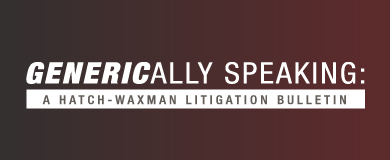- Acumen Powered by Robins Kaplan LLP®
- Affirmative Recovery
- American Indian Law and Policy
- Antitrust and Trade Regulation
- Appellate Advocacy and Guidance
- Business Litigation
- Civil Rights and Police Misconduct
- Class Action Litigation
- Commercial/Project Finance and Real Estate
- Corporate Governance and Special Situations
- Corporate Restructuring and Bankruptcy
- Domestic and International Arbitration
- Health Care Litigation
- Insurance and Catastrophic Loss
- Intellectual Property and Technology Litigation
- Mass Tort Attorneys
- Medical Malpractice Attorneys
- Personal Injury Attorneys
- Telecommunications Litigation and Arbitration
- Wealth Planning, Administration, and Disputes
Acumen Powered by Robins Kaplan LLP®
Ediscovery, Applied Science and Economics, and Litigation Support Solutions
-
June 1, 2022Chambers USA Recognizes Five Robins Kaplan Practice Groups And 17 Lawyers In 2022 Guide
-
June 1, 2022Seasoned Attorney Joins Firm’s Business Litigation Group
-
May 26, 2022Shira Shapiro Named Woman of Promise By The Pearl Society
-
June 3, 202219th Annual Advanced Insurance Law
-
June 9, 2022Building Your Brand: Perspectives and Insights from a Diverse Bar
-
June 10, 2022LGBTQ Legal Services: Transgender Name Change Clinic
-
May 24, 2022Briefly: Seeking Fees and Costs While on Appeal
-
May 19, 202211th Circ. Ban On Service Awards May Inhibit Class Actions
-
May 13, 2022Trademark Applications and the Murky Waters of Subject Matter Jurisdiction
-
June 2, 2022Sandberg Stepping Down as Meta COO After 14 Years
-
June 1, 2022Markets Revert to Recent Form as Pessimism Takes Hold
-
May 27, 2022Unexpectedly Strong Retail Sales Pull Markets Back from the Brink
Find additional firm contact information for press inquiries.
Find resources to help navigate legal and business complexities.
Horizon Pharma Ireland Ltd. v. Actavis Laboratories, UT, Inc.
The formulation of Pennsaid 2% was not a result of routine optimization of the formulation of Pennsaid 1.5%, therefore the claims were not obvious.
July 14, 2017

Case Name: Horizon Pharma Ireland Ltd. v. Actavis Laboratories, UT, Inc., No. 14-7992 (NLH/AMD) (D.N.J. May 12, 2017) (Hillman, J.)
Drug Product and Patent(s)-in-Suit: Pennsaid® 2% (diclofenac sodium topical solution); U.S. Patent No. 9,066,913 (“the ’913 patent”)
Nature of the Case and Issue(s) Presented: Whether the ’913 patent was obvious in light of the prior art Pennsaid 1.5% and other references. Pennsaid 2% is a topical medication for the treatment of knee pain due to osteoarthritis. As claimed, it is applied twice a day and has thickening agents making it more viscous than Pennsaid 1.5%, the viscosity of which is similar to that of water.
Why Horizon Prevailed: The court found the ’913 patent non-obvious. Defendants argued that three changes to Pennsaid 1.5%--and leaving two ingredients unchanged—were obvious optimizations of result-effective variables that produced a predictable result.
The court said that the asserted claim was not a result of routine optimization of Pennsaid 1.5%, as “general principles and ranges of permissible concentrations would not have predicted the exact formulation and dosing frequency that resulted in Pennsaid 2%.” In so concluding, it attacked defendants’ expert testimony based on adjusting the tone of a stereo receiver:
[The expert] testified that drug formulation is like adjusting a stereo receiver, and the formulation of Pennsaid 2% from the Pennsaid 1.5% chassis was simply like turning the knobs to adjust the bass and treble to achieve the desired result, in this case the delivery of the active agreement to the desired spot under the skin and at the knee at a reduced dosing regimen…. [The expert] explained that a POSA would have used her own knowledge about drug formulations and the available literature to perform a routine optimization of Pennsaid 1.5% by turning up the dial for a little more diclofenac sodium, turning up the dial for ethanol by double, turning off the dial for glycerin, turning on the dial for HPC, leaving the dials for DMSO and propylene glycol at their current setting, and turning the dial for water to sufficiently fill in the remainder.
The court rejected this analogy for three reasons. Firstly, the expert did not explain the difference between the analogy, where the stereo knobs are independently adjustable, and the claimed medication formulation, where the totals must add up to one-hundred percent. Secondly, the analogy failed to consider the need for the API to pass through many layers of tissue before reaching its target. And thirdly, the court concluded that there was insufficient record evidence to support the Defendant’s legal argument the three changes to the Pennsaid 1.5% formulation—and the two ingredients left unchanged—would produce a predictable result, particularly as to the formulation's absorption, thickness, and drying time.
Related Professionals
Related Publications
Related News
If you are interested in having us represent you, you should call us so we can determine whether the matter is one for which we are willing or able to accept professional responsibility. We will not make this determination by e-mail communication. The telephone numbers and addresses for our offices are listed on this page. We reserve the right to decline any representation. We may be required to decline representation if it would create a conflict of interest with our other clients.
By accepting these terms, you are confirming that you have read and understood this important notice.
